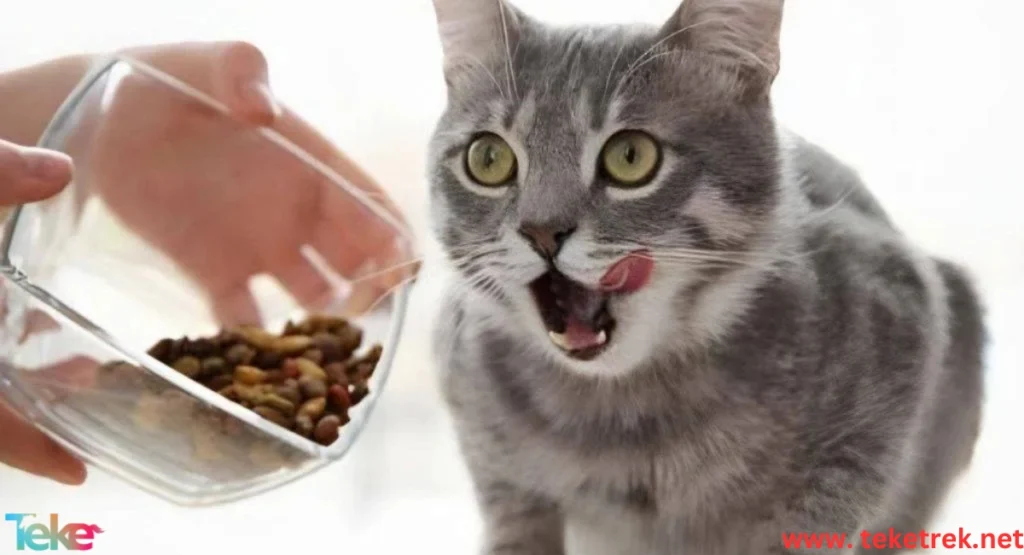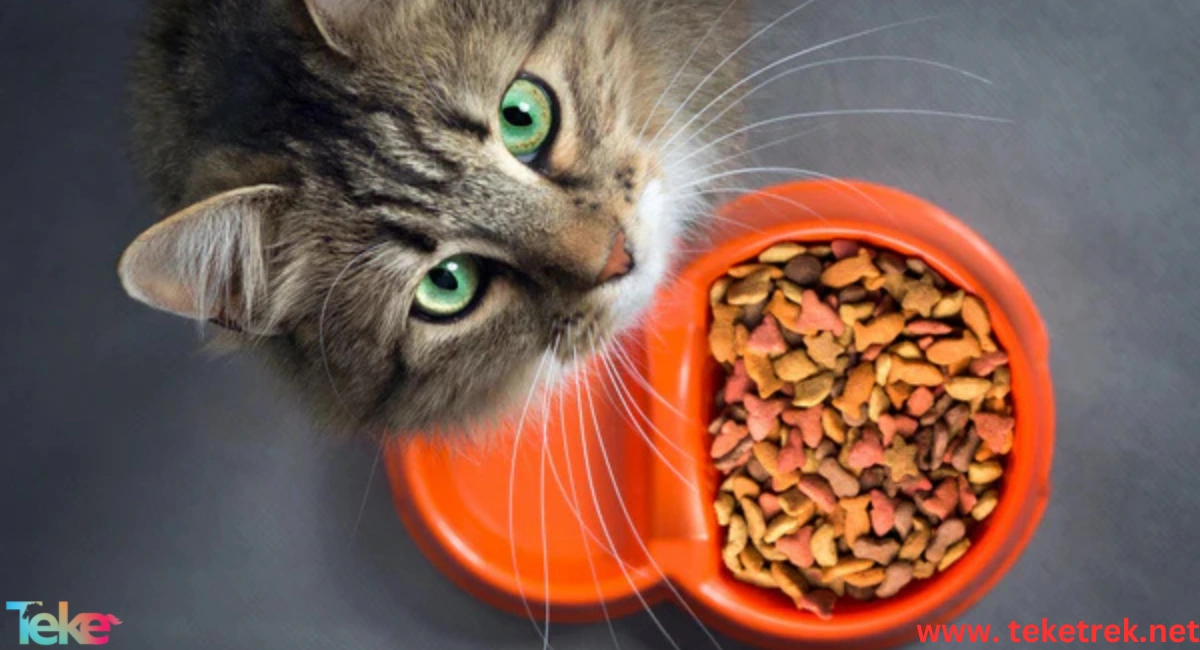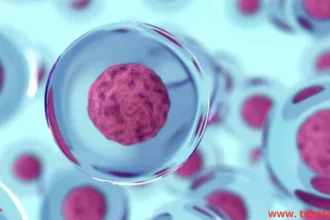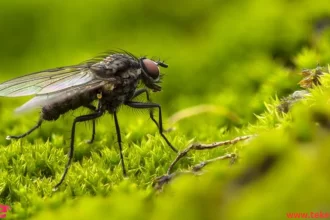Dry kibble foods for cats often contain a high percentage of carbohydrates, including grains. This raises questions about whether dry kibble is suitable for cats and whether it provides the balanced nutrition that these pets need.
In this article from teketrek, we will analyze the benefits and drawbacks of dry kibble for cats and explore whether there are better dietary options that meet their unique nutritional needs as carnivorous animals. We will look at the essential nutritional components for cats and how dry kibble can play a role in their diet, whether positive or negative.
What Is Dry Kibble for Cats and What Is Its Nutritional Content?
Dry kibble for cats is a type of commercial cat food with low moisture content, usually around 10%. It is made by mixing and cooking ingredients such as meat (or meat by-products), grains, vegetables, vitamins, and minerals at high temperatures and pressures. This process improves starch digestibility, followed by fat coating to enhance flavor.
Nutritional Content:
Dry cat food is designed to be nutritionally complete and balanced, meaning it provides all essential nutrients cats need for growth. Common ingredients and their roles include:
- Proteins: Derived from meat, poultry, or fish, essential for building and repairing tissues.
- Fats: Provide energy and help absorb fat-soluble vitamins.
- Carbohydrates: A source of energy, although cats require less than some other animals.
- Vitamins and Minerals: Essential for various body functions. Dry food is fortified with vitamins A, B, C, D, E, and K, along with minerals like calcium, phosphorus, zinc, and iron.
- Fiber: Important for digestive health.
- Water: Dry cat food contains a small amount of water, usually around 10%, so it is sometimes recommended to feed a mix of wet and dry food or provide plenty of fresh water alongside.

Are Dry Kibble Foods Healthy for Cats?
Yes, dry kibble can be healthy for cats if chosen and fed correctly. Grains provide important nutrients such as iron, calcium, and B vitamins. Also, the hard texture of dry kibble helps clean cats’ teeth. However, it is essential that the grains used in cat food are of high quality and do not make up the majority of the cat’s diet, with the main focus on animal protein.
Benefits of Dry Kibble for Cats:
- Dental Health: Dry kibble helps clean cats’ teeth while chewing, reducing tartar buildup and protecting against gum disease.
- Energy Source: Grains provide carbohydrates, a good energy source for cats.
- Nutrient Sources: Grains contain many important nutrients like iron, calcium, and B vitamins.
- Easy Storage and Serving: Dry food is easy to store and serve compared to wet food.
Drawbacks of Continuous Use of Dry Kibble
Continuous feeding of dry kibble can cause several health issues, including increased stomach acidity, higher risk of obesity and urinary problems, potential kidney stone formation, and dental problems.
Here are the details of these drawbacks:
- Increased Acidity: Long-term use of dry food may increase stomach acidity in cats.
- Obesity and Urinary Problems: Some dry foods contain high fat content, which can cause diarrhea or obesity. Also, the low moisture content in dry food can lead to urinary problems, such as urine retention and severe kidney failure in extreme cases.
- Kidney Stones: High levels of vitamins and minerals in some dry foods may lead to kidney stone formation.
- Dental Problems: Long-term dry food use can cause tartar and plaque buildup on teeth, leading to gum and dental issues.
- Quality of Dry Foods: It is important to ensure the dry food is of high quality, with high protein and healthy fats, and to avoid poor-quality types.
- Lethargy and Flabbiness: Continuous dry food feeding may cause loss of vitality and activity in cats, with possible body flabbiness.
- Disease Risks: Some dry foods may be unhealthy and cause other health issues like constipation and urinary tract infections.
Differences Between Dry and Wet Food in Terms of Health Value
Wet cat food is characterized by its high moisture and protein content, making it a good option for cats that do not drink enough water. Dry food offers dental health benefits and helps reduce tartar buildup. A mix of both wet and dry food can be beneficial to meet different needs of cats.
Wet Food:
- Moisture Content: Contains a high percentage of water, helping keep the body hydrated and preventing kidney problems.
- Protein: Usually rich in protein, essential for cat health.
- Palatability: May attract cats with poor appetite due to its soft texture.
- Digestion: Easier to digest for cats with sensitive teeth or digestive issues.
- Calories: Often less calorie-dense than dry food, helping maintain a healthy weight.
Dry Food:
- Teeth: Helps clean teeth and prevent tartar buildup.
- Storage: Easy to store with a longer shelf life compared to wet food.
- Cost: Generally cheaper than wet food.
- Carbohydrates: May contain higher carbohydrate content, potentially causing weight issues for some cats.
- Moisture: Low moisture content, which may require extra water provision.
Everything you need to know about moonfish: its characteristics, habitat, and how to care for it.
Are Dry Kibble Foods Suitable for All Cats? When to Be Careful
No, not all cats are suitable for dry kibble, and caution is needed in some cases. Generally, dry kibble can be part of a balanced diet for cats but may not suit all cats. Owners should monitor their cats’ health and ensure the chosen dry food fits their specific needs, especially if there are health issues or dietary restrictions.
When to Be Careful with Dry Kibble for Cats?
- Kittens: Dry kibble may not be suitable for very young kittens (under 6–8 weeks) because it can be hard to chew and digest. Wet food or specially formulated kibble for kittens that is easy to digest is preferred.
- Senior Cats: Older cats may have dental problems or difficulty chewing, so wet food might be a better option.
- Cats with Health Problems: Cats with kidney disease or digestive issues may require a special diet that might exclude dry kibble.
- Cats that Prefer Wet Food: Some cats simply prefer wet food and will not eat dry. In this case, a balanced wet food diet should be provided with all necessary nutrients.
- Food Allergies: Some cats may be allergic to certain ingredients in dry food, such as grains or specific proteins. If signs of allergy (itching, vomiting, diarrhea) appear, consult a vet to identify allergens and replace them with alternatives.

Tips for Providing a Balanced Diet Combining Dry and Wet Food
To provide a balanced diet that combines dry and wet food, several tips should be followed. It is preferable to offer about 70% dry food to 30% wet food, with adjustments based on the cat’s needs. Dry food can also be moistened by adding water to increase hydration. Always ensure fresh and clean water is available.
Details:
- Nutritional Balance: A mix of dry and wet food leverages the benefits of both. Wet food provides hydration and flavor, while dry food supports dental health and is more economical.
- Ideal Ratio: Typically, 70% dry food and 30% wet food is ideal, but it can be modified according to the individual cat’s needs. Older cats may require more wet food for hydration.
- Moistening Dry Food: Adding a little warm water to dry food can soften it and improve flavor, encouraging cats who dislike dry food to eat it.
- Water Availability: Always provide clean, fresh water, preferably changed daily to keep it attractive.
- Veterinary Consultation: Consult a vet to determine appropriate amounts of dry and wet food based on the cat’s age, weight, and health status.
- Scheduled Feeding: Feeding at regular times helps regulate the cat’s appetite.
- Avoid Overfeeding: Do not give large amounts of food at once to prevent overeating and obesity.
- Avoid Harmful Foods: Avoid giving cats harmful foods that may cause health problems.
In Conclusion,
Cats should not rely solely on dry kibble as their main food. Cats are carnivores and need a diet rich in animal protein and fat. While dry food can be part of a balanced diet, it does not provide all the nutrients cats need to stay healthy, especially moisture.





